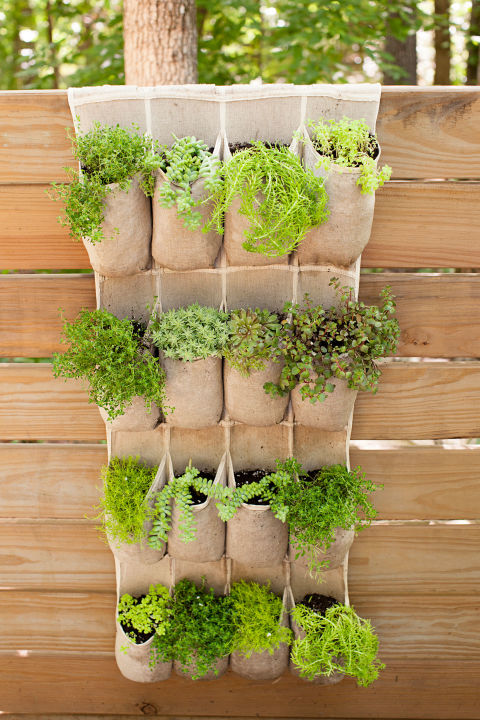Maximize Small Spaces, A Guide to Starting a Vertical Garden

How to Start a Vertical Garden in Small Spaces
Starting a vertical garden in small spaces can be a fantastic way to bring greenery and freshness into your home or office without taking up too much floor space. With the right planning and execution, you can create a thriving vertical garden that will not only enhance your surroundings but also provide a sense of calm and serenity. In this guide, we will explore the basics of vertical gardening and provide you with tips on how to start a vertical garden in small spaces.
Why Vertical Gardening in Small Spaces?
Vertical gardening is a great way to maximize small spaces because it allows you to grow plants vertically, making the most of the available height. This is particularly useful in urban areas where space is often at a premium. By using vertical gardening techniques, you can create a lush and vibrant green space that can be enjoyed from any angle.
Benefits of Vertical Gardening
Maximizes Space: Vertical gardening allows you to grow plants vertically, making the most of the available height.
Easy Maintenance: With plants growing upwards, it is easier to maintain and prune them.
Increased Productivity: Vertical gardens can be used to grow a variety of plants, including herbs and vegetables, which can be harvested for cooking.
Aesthetic Appeal: Vertical gardens can be designed to be visually appealing, adding a touch of greenery to any room.
Choosing the Right Plants for Your Vertical Garden
When selecting plants for your vertical garden, consider the following factors:
Light Requirements: Choose plants that thrive in the amount of light available in your space.
Water Needs: Select plants that require the same amount of water as your space can provide.
Space Requirements: Ensure the plants you choose do not grow too large for the space available.
Hardiness: Choose plants that are hardy enough to withstand the conditions in your space.
Types of Vertical Gardens
There are several types of vertical gardens you can create, each with its own benefits and challenges:
Wall Gardens: These are gardens that are attached to a wall or fence.
Pallet Gardens: These are gardens created using repurposed pallets.
Hanging Gardens: These are gardens that hang from the ceiling or a shelf.
Window Gardens: These are gardens that are placed in a window sill or on a windowsill.
DIY Vertical Garden Ideas
Recycled Materials: Use recycled materials like pallets, old crates, or even old furniture to create your vertical garden.
Indoor Plants: Use indoor plants that thrive in low light conditions, such as pothos, spider plants, or ferns.
Herbs: Grow herbs like basil, thyme, or rosemary, which are easy to maintain and can be harvested for cooking.
Vertical Planters: Use vertical planters made from materials like wood, plastic, or even old bottles.
Tips for Starting a Vertical Garden in Small Spaces
Choose the Right Location: Select a location that receives the right amount of light for the plants you choose.
Use the Right Soil: Use a high-quality potting mix that is specifically designed for indoor plants.
Prune Regularly: Regular pruning will help your plants grow healthy and strong.
Monitor Watering: Ensure your plants receive the right amount of water to prevent overwatering or underwatering.
Add Decorative Elements: Add decorative elements like rocks, pebbles, or even small figurines to enhance the aesthetic appeal of your vertical garden.
Common Mistakes to Avoid
Overwatering: Avoid overwatering your plants, as this can lead to root rot and other issues.
Underwatering: Avoid underwatering your plants, as this can cause them to wilt and die.
Poor Soil: Use high-quality potting mix to ensure your plants receive the right nutrients.
Inadequate Light: Ensure your plants receive the right amount of light to prevent them from becoming leggy or unhealthy.
Additional Resources
For more information on vertical gardening, you can visit The Spruce's comprehensive guide.
Conclusion
Starting a vertical garden in small spaces can be a rewarding and fulfilling experience. By following the tips and guidelines outlined in this guide, you can create a thriving vertical garden that will bring joy and serenity to your home or office. Remember to choose the right plants, use the right soil, and monitor watering and light conditions to ensure your vertical garden thrives.
FAQs
Q: What are some common mistakes to avoid when starting a vertical garden in small spaces?
A: Common mistakes to avoid include overwatering, underwatering, using poor soil, and inadequate light.
Q: Can I use any type of plant for my vertical garden?
A: No, it is important to choose plants that are suitable for the conditions in your space, including light, water, and space requirements.
Q: How do I choose the right location for my vertical garden?
A: Choose a location that receives the right amount of light for the plants you choose and that is convenient for maintenance and watering.
Q: Can I use recycled materials for my vertical garden?
A: Yes, using recycled materials like pallets or old crates can be a great way to create a unique and eco-friendly vertical garden.
Q: How do I maintain my vertical garden?
A: Regular pruning, watering, and monitoring light conditions are essential for maintaining a healthy and thriving vertical garden.
0 Response to " Maximize Small Spaces, A Guide to Starting a Vertical Garden"
Post a Comment